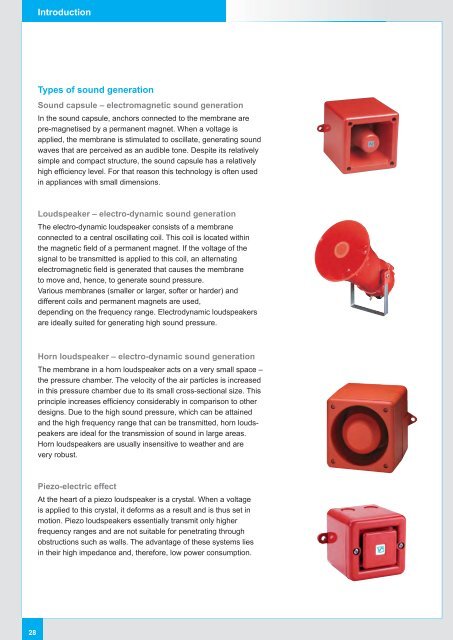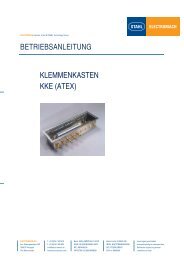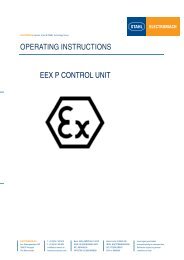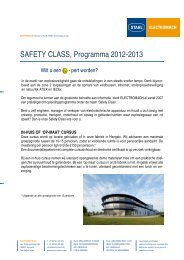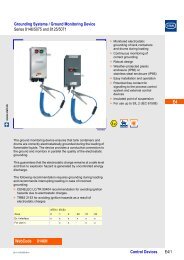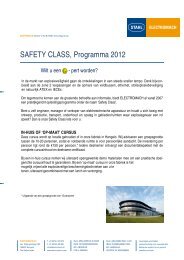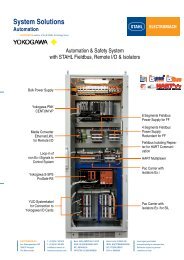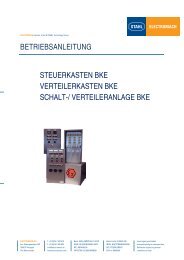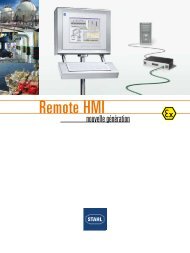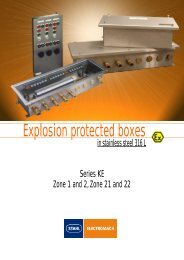Pfannenberg Catalogue
Pfannenberg Catalogue
Pfannenberg Catalogue
Create successful ePaper yourself
Turn your PDF publications into a flip-book with our unique Google optimized e-Paper software.
Introduction<br />
Types of sound generation<br />
Sound capsule – electromagnetic sound generation<br />
In the sound capsule, anchors connected to the membrane are<br />
pre-magnetised by a permanent magnet. When a voltage is<br />
applied, the membrane is stimulated to oscillate, generating sound<br />
waves that are perceived as an audible tone. Despite its relatively<br />
simple and compact structure, the sound capsule has a relatively<br />
high efficiency level. For that reason this technology is often used<br />
in appliances with small dimensions.<br />
Loudspeaker – electro-dynamic sound generation<br />
The electro-dynamic loudspeaker consists of a membrane<br />
connected to a central oscillating coil. This coil is located within<br />
the magnetic fi eld of a permanent magnet. If the voltage of the<br />
signal to be transmitted is applied to this coil, an alternating<br />
electromagnetic fi eld is generated that causes the membrane<br />
to move and, hence, to generate sound pressure.<br />
Various membranes (smaller or larger, softer or harder) and<br />
different coils and permanent magnets are used,<br />
depending on the frequency range. Electrodynamic loudspeakers<br />
are ideally suited for generating high sound pressure.<br />
Horn loudspeaker – electro-dynamic sound generation<br />
The membrane in a horn loudspeaker acts on a very small space –<br />
the pressure chamber. The velocity of the air particles is increased<br />
in this pressure chamber due to its small cross-sectional size. This<br />
principle increases effi ciency considerably in comparison to other<br />
designs. Due to the high sound pressure, which can be attained<br />
and the high frequency range that can be transmitted, horn loudspeakers<br />
are ideal for the transmission of sound in large areas.<br />
Horn loudspeakers are usually insensitive to weather and are<br />
very robust.<br />
Piezo-electric effect<br />
At the heart of a piezo loudspeaker is a crystal. When a voltage<br />
is applied to this crystal, it deforms as a result and is thus set in<br />
motion. Piezo loudspeakers essentially transmit only higher<br />
frequency ranges and are not suitable for penetrating through<br />
obstructions such as walls. The advantage of these systems lies<br />
in their high impedance and, therefore, low power consumption.<br />
28


